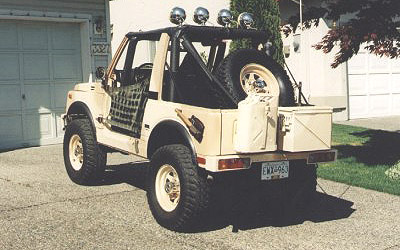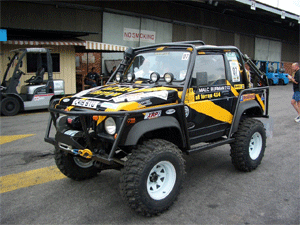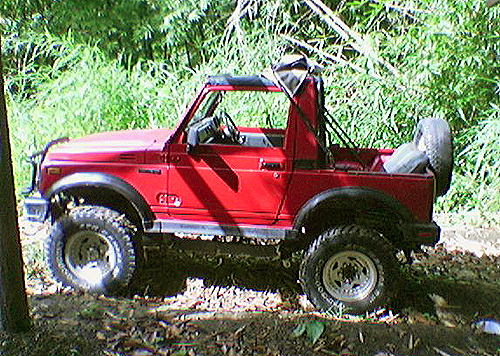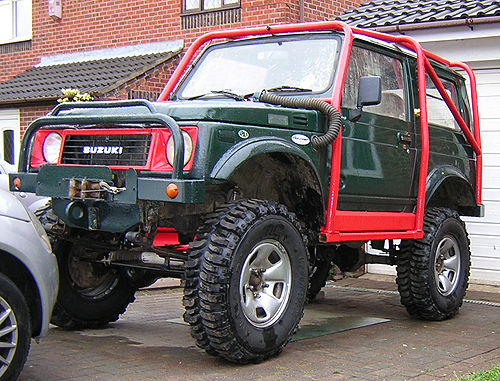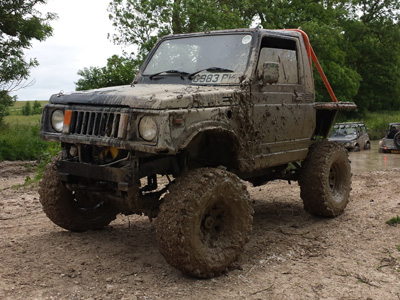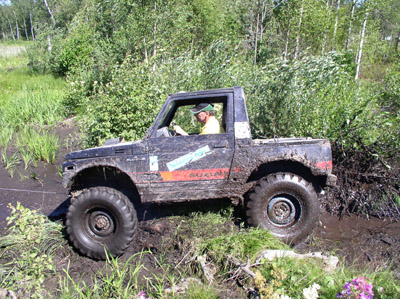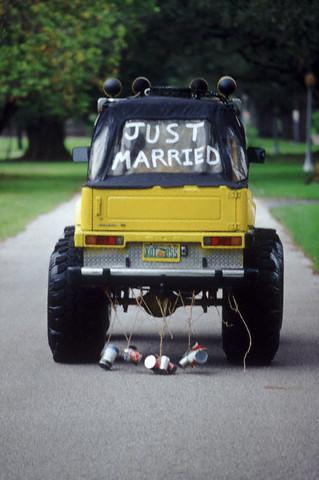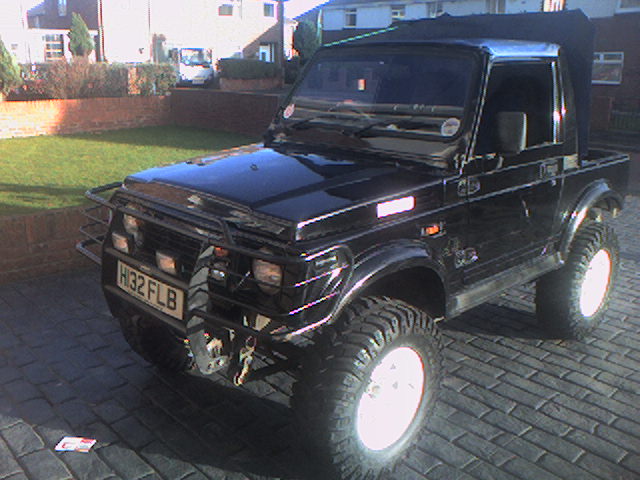Original equipment headlights as fitted to most vehicles are good for a the majority of conditions. However, they are expected to cope with almost any type of situation that requires light. Unfortuantely they do not always fulfil the job requirements as expected.
Additional lighting can be extremely useful on a Suzuki SJ and can make driving after dark much more enjoyable. Additional or auxillary lighting as discussed here includes fog lights and spotlights (also known as Driving lights).
The difference between Driving lights and Fog light is not difficult to understand. Driving lights supplement the vehicle’s own lighting, giving a moderately broad spread illuminating the road sides and providing penetration ahead.
Fog lamps on the other hand are not simply driving lights with an amber filter. What is crucial about a fog light is its spread, not its colour. Genuine fog lamps throw a very broad flat beam that stays low. This prevents glare as the light bounces off the airborne particles and is thrown back into the face of the driver. Amber permits further penetration through the fog, but its primary function is not to increase the driver’s visibility but to make the vehicle more visible to other drivers.
Both Driving lamps and Fog lamps are easily fitted by anyone with a basic knowledge of car electrics. Due to the amount of current drwn by the lamps, they must be fitted in conjunction with a relay. They are an easy and inexpensive modification and really make night driving a more enjoyable experience.
Tools and equipment ... Spotlights (obviously)
Electrical tape
In line fuse holder
15 Amp fuse
Switch20 Amp
"Bosch" or "Hella" relay
"14 guage" wire
Spanners
Screwdrivers
Solder
Soldering iron
Wire cutters
Multimeter
Installation ...
The fog light beams have a different pattern to those of spotlights. This needs to be taken into account when a mounting position is considered, and the lights mounted accordingly.
Foglights are usually mounted as low as possible to allow them to penetrate under the fog and mist. Under the front bumper is a good position. Spotlights on the other hand, can be mounted pretty much anywhere. It is best to mount them on to the top of the front bumper. Some bull bars have mounting brackets for them. They can even be mounted on the roof of the vehicle.
NOTE: - As the installation process and wiring are the same for both fog lights and spotlights, any reference to a "spotlight" in the following also means "fog lights" unless otherwise stated.
Wiring ...
Now it's time to start on the wiring. Run the wires from the spotlights to a central point in the engine compartment. It is easiest to run the wires up to a point near the battery where the relay can be easily mounted on the upright metal plate in front of the battery. Use cable ties to secure the wires along the way so that they are held securely out of the way of any moving parts. Always try and keep the Black wire as an "Earth" or "Ground" wire. This makes connecting all the wires much easier later on.
The connections are relatively easy, and all wires connected to the relay must be terminated with insulated "spade" connectors to reduce the risk of corrosion and electrical shorting.
Terminal "30" is the "common" power input to the relay contacts (87 and 87a) and is connected directly to the battery via an in-line fuse.
Terminal "85" is the connection for the relay earth.
Terminal "86" is connected to the spotlight On/Off switch.
Terminal "87" is connected to the positive wire of the spotlight.
Terminal "87a" is not connected. Insulate it as there will be power to this point when the relay is off.
Join the two black earth wires from the spotlights together, and terminate them using a "ring" terminal connector. Secure this to a good earth point on the vehicle. It is easiest to use one of the existing earth points on the vehicle body, preferably the one near the horn. Now join the two positive wires fom the spotlights together. Test to see that the lights are working by temporarily connecting these two wires directly to the positive terminal of the battery. Once you are happy that the lights are working, terminate this joint with an insulated "spade" connector, and connect it to terminal "87" on the relay.
The next step is to connect power to the spotlights. This is done by cutting another length of wire, terminating one end with an insulated "spade" connector, and connecting the other end to an in-line fuse holder. The "spade" connector is then connected to terminal "30" of the relay. Connect another length of wire to the other end of the in-line fuse holder, and terminate this with a "ring" connector. This is then connected to the positive terminal of the battery.
Do not put the 15 Amp fuse in place just yet ! !
It is very important to use a fuse, as this protects the wiring from burning out if there is an electrical short. It's easier and cheaper to replace a fuse that it is to replace the wiring !
Next we need to provide a good earth for the relay. Cut a length of black wire, terminate one end with an insulated "spade" connector, and the other end with a "ring" connector. The "spade" connector is connected to terminal "85" of the relay, and the "ring" connector is earthed to the vehicle body at an earth point.
Now it is time to decide where you want to mount the On/Off switch for the rear light. Dashboard aesthetics can mean a lot, even in the humble SJ, so if possible, try and get your hands on a standard SJ switch. These are easier to mount into the dash without having to drill holes as there are usually unused accessory switch bays available. At the end of the day, where you put your switch is entirely up to you. Just make sure that there is enough space behind the switch so that wires will not short out.
Before moving on, it is probably wise to test that the spotlights and relay work as they should. Connect a length of wire to pin "86" of the relay, and touch this wire to the positive terminal of the battery. The relay should click and the spotlights should come on. If they do not, check all wiring now, before going any further. Now comes the difficult bit - running a single wire inside the cab of the SJ to where the swicth is located.
The easiest way to do this is to route the wire to the passenger side of the engine bay. There you will see a large rubber grommet in the top right hand corner. Run the wires through the centre of the grommet, along with the other factory wires. Once inside the cab, route the wire along the original wiring harness until you reach a point where to can take it to the On/Off switch. Connect this wire to the switch. The other end of this wire is terminated with a "spade" connector, and is connected to pin "86" on the relay.
One more wire to connect, and the job is done, but before we can connect this wire we have to decide how we want the spotlights to be activated or "switched" on. This will determine where we connect the wire.
There are four ways in which the spotlights can be switched on. Click on the relevant link for details of the wiring and diagrams :-
Only if the headlight main beam is used.
The spotlights can be switched on with the auxillary switch only if the main driving lights (high beam) are being used. Diagram
Only if the headlights are switched on.
The spotlights can be switched on with the auxillary switch only if the headlights are being used. Diagram
Only if the park lights are switched on.
The spotlights can only be switched on with the auxillary switch only if the parking lights are being used. Diagram
Only if the ignition is switched on.
The spotlights can be switched on using the auxillary switch, but only if the ignition switch is switched on or the vehicle is running. Diagram
Independently of any other lights.
The spotlights can be switched on at any time using the auxillary switch, irrespective of any other vehicle lights. Diagram
Finally ... It is suggested that "fog lights" be wired in such a way that they can only be switched on when the normal driving lights are used. "Spotlights" however, should be wired up so that they can only be activated when the main bright beams are used. This way, you will not dazzle oncoming motorists with bright lights.
Now that every thing is wired up and tested, aim the spotlights, tighten all the bolts, and thats all there is to it!
An inexpensive little modification that can make your nightime driving a lot more enjoyable.

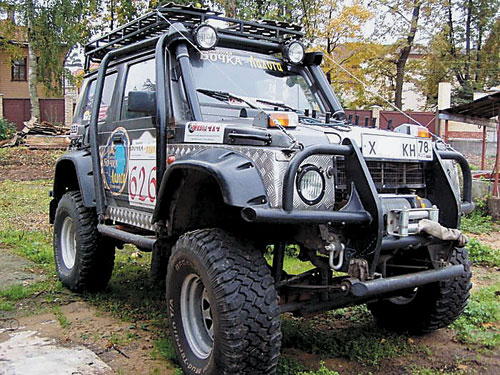
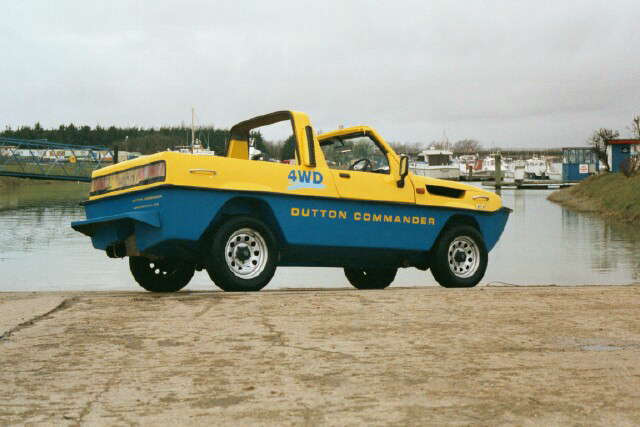
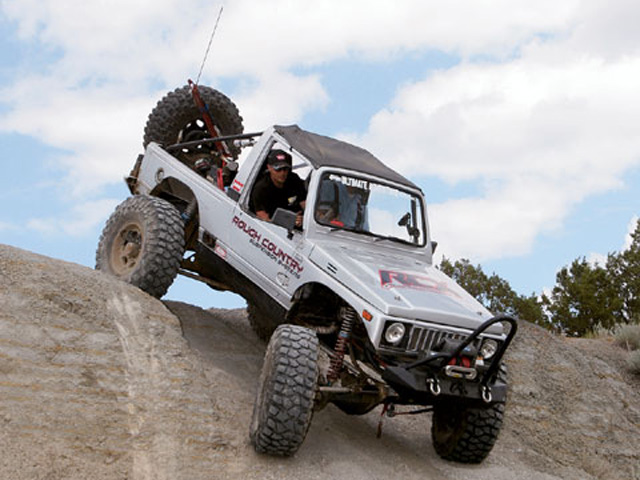
![0610_4wd_01z+suzuki_samurai+group_of_suzukis[1274].jpg](/images/gallery/favourites/0610_4wd_01z+suzuki_samurai+group_of_suzukis[1274].jpg)
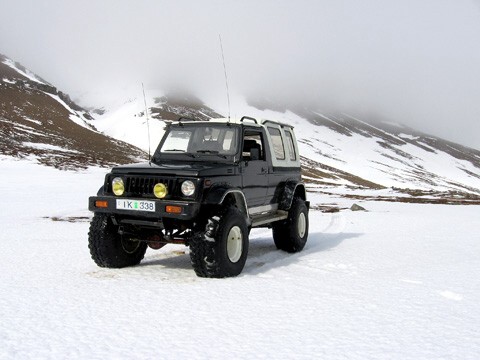
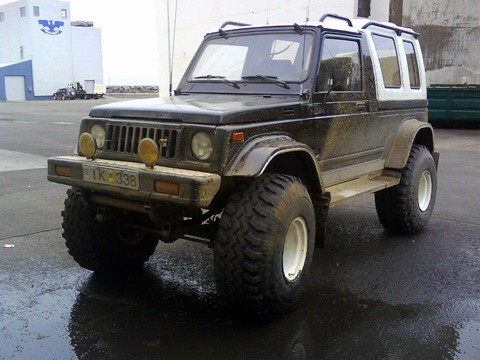

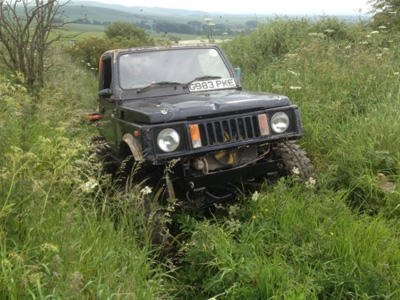


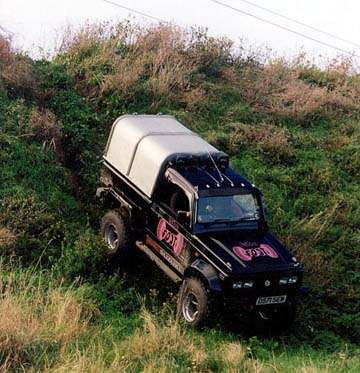
![fenderfrt6_SJ-1[376].jpg](/images/gallery/favourites/fenderfrt6_SJ-1[376].jpg)
